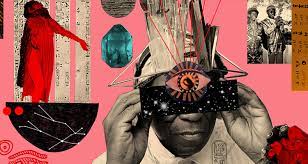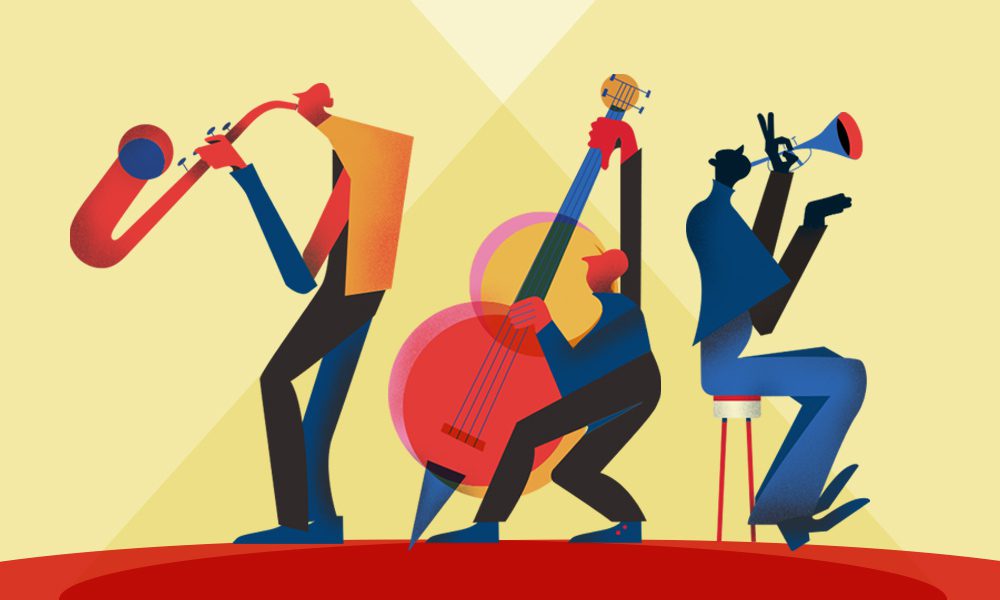Origins of Jazz
Picture this: The dawn of the 20th century, a time of sepia tones, zoot suits, and the rhythmic heartbeat of a revolution. Jazz, the wild child of music, burst onto the scene, strutting its syncopated swagger right into the pages of history. Racial segregation was doing its best to hog the spotlight, but jazz wasn’t about to play second fiddle.
Deep in the gumbo of New Orleans, where cultural spices mingled, jazz found its roots. With a nod to African musical traditions, jazz kicked off its funky shoes and became the sonic graffiti on the walls of the African American experience. But wait, there’s more – cue the Harlem Renaissance, the grand ball of cultural revolution in the 1920s.
As the Harlem Renaissance flung open its doors, jazz waltzed right in, wearing its best improvisational suit. The intellectual soiree needed a beat, and jazz was the rhythmic ringleader. Suddenly, the smoky notes of saxophones and trumpets weren’t just a soundtrack; they were a powerful voice, a megaphone for artists itching to tackle social issues.
Imagine jazz as the cool cat in a speakeasy, whispering secrets of societal change through the smoky haze of a sax solo. It wasn’t just music; it was a conversation, a declaration that rhythm and rebellion go hand in hand.
Jazz, the rebel with a horn, slinging musical cocktails into the air of racial tension. The Harlem Renaissance wasn’t just a party; it was a stage, and jazz took the spotlight, grooving its way into the hearts and minds of those ready to dance to a different tune.

Sun Ra’s musical journey began on Earth, but his imagination soared into the cosmos. The term “cosmic jazz” encapsulates his genre-bending approach, where traditional jazz met futuristic soundscapes. Ra’s embrace of Afrofuturism, an artistic movement blending African diasporic culture with science fiction elements, positioned him as a sonic astronaut charting a course through unexplored musical galaxies.
Sun Ra’s Arkestra, his ever-evolving ensemble, served as the spacecraft for his musical exploration. Ra’s compositions were intricate tapestries of sound, seamlessly blending swing, free jazz, electronic effects, and unconventional instruments. His use of synthesizers in the 1950s was groundbreaking, foreshadowing later developments in electronic music.
Beyond the notes and rhythms, Sun Ra’s music was a vessel for social commentary. His cosmic narratives and otherworldly imagery were not mere escapism; they were a deliberate commentary on the state of humanity. In a racially charged era, Sun Ra’s Afrofuturist vision challenged societal norms, urging listeners to envision a future where the boundaries of race and identity dissolved.
Sun Ra’s work conveyed a message of liberation and self-expression. Titles like “Space Is the Place” and “We Travel the Spaceways” weren’t just catchy; they were declarations of autonomy. In an era marked by civil rights struggles, Sun Ra’s music became a sonic manifesto, inviting listeners to break free from earthly constraints and imagine new possibilities.
Improvisation As A Metaphor
The tie between jazz and the Civil Rights Movement in the hip-shaking 1950s and soulful 1960s shows how music was used as an expression of the people who were tired of being silenced. Duke Ellington and Charles Mingus, the maestros of melody, weren’t just playing tunes; they were crafting anthems for the revolution. Picture John Coltrane, his saxophone sounding off like a protest in the night, giving life to “Alabama” after the 16th Street Baptist Church bombing. And let’s not forget Max Roach, whose “We Insist! Freedom Now Suite” was a musical punch, demanding nothing less than racial equality. Jazz is not just musicians riffing on chords; it’s a metaphorical tap dance on the tightrope of social change. Jazz cats like Coltrane and Mingus weren’t just playing notes; they were throwing down a musical gauntlet, adapting on the fly like musical chameleons. In the face of societal challenges, jazz’s spontaneity became the ultimate rebel yell, saying, “Hey world, we’re not playing your old tune anymore!”

In jazz, it’s not just about the solo; it’s about the conversation. Imagine jazz as a lively chat where each instrument has something to say, a musical dialogue that mirrors the back-and-forth of social movements. The call-and-response dynamics in jazz aren’t just notes bouncing off walls; they’re echoes of the dialogues within the Civil Rights Movement. It’s a musical conversation that doesn’t know the meaning of boundaries, transcending the limits of sound to create a harmony of resistance.
Jazz began as the rebel with a cause, the soundtrack of a movement that shook the foundations of injustice. In the unpredictable world of jazz, where notes are rebels and instruments are warriors, the connection to the Civil Rights Movement isn’t just poignant; it’s a riotous celebration of change and the enduring power of music to stir the soul and spark a revolution.


